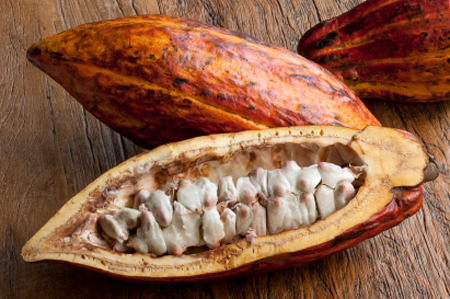Cocoa bean scarcity clips Indonesia’s processing expansion
Category: Cocoa
 (Reuters) – A multi-million dollar expansion by international cocoa grinders in Indonesia is facing a steep supply shortfall of cocoa beans, fuelling a likely jump in imports from West Africa and threatening smaller local processors.
(Reuters) – A multi-million dollar expansion by international cocoa grinders in Indonesia is facing a steep supply shortfall of cocoa beans, fuelling a likely jump in imports from West Africa and threatening smaller local processors.
Although processing of raw beans into the key ingredients for chocolate will jump 25 percent this year, according to industry estimates obtained by Reuters, this is well behind a near doubling of capacity, leaving some grinders idle.
Commodity giants such as Cargill, top chocolate maker Barry Callebaut and Malaysian cocoa group Guan Chong Berhad have set up grinding operations in the world’s third-largest cocoa bean producer, driven by a local bean export tax and the promise of abundant raw material.
Local grinders are also expanding with Asia-Pacific sales of chocolate confectionary expected to rise about 5 percent a year for the next three years, according to researcher Euromonitor International, well ahead of limp U.S and European markets.
But as Indonesian grinding capacity jumps 85 percent to 600,000 tonnes, production has been hit by erratic weather, rampant disease and the failure of a $350 million replanting programme aimed at boosting output to 1 million tonnes by 2020.
Output is expected to fall to an eight-year low of 425,000 tonnes in 2014, says the Indonesian Cocoa Association, leading to potential financial losses at under-utilised factories for some of the country’s 19 grinders.
“For small grinders with limited capital, they might have to close temporarily until cocoa bean production increases,” said Sindra Wijaja, an executive director of Indonesia Cocoa Industry Association, which groups grinders.
Others may be forced to ramp up expensive bean imports to keep factories running profitably. The association expects imports to triple to 120,000 tonnes, with other estimates as high as 150,000 tonnes.
GRINDING BELOW CAPACITY
About 280,000 tonnes of beans were processed in Indonesia last year, grinding sources told Reuters, below capacity of 324,000 tonnes.
Cocoa is grown on the islands of Sulawesi and Sumatra and beans are priced against New York cocoa futures <0#CC:>, currently hovering around $3,000 a tonne.
“If you ship beans from Sumatra, you can get them at discounts of $50 a tonne. But for Ghanaian beans delivered to your factory, you have to pay premiums of $330,” said a grinder in Java, who declined to be identified.
“That’s before import tax, customs, and warehouse costs at the port while waiting for clearance. In short, importing beans is way more complicated and more expensive. For grinders, one key to success is to be close to the source of beans.”
To help alleviate the cost of imports, grinders are pushing Indonesia to drop a 5 percent import duty on cocoa beans, although the move is opposed by farmers who would like to see cuts in the cocoa ban export tax.
Cargill’s $100 million processing facility in east Java is expected to start in the middle of this year, processing about 70,000 tonnes of beans. Barry Callebaut opened a $33 million plant on the island of Sulawesi late last year, with initial annual capacity of 30,000 tonnes.
Barry Callebaut declined to comment on bean supply, while Cargill was unable to give an immediate response. Malaysia’s Guan Chong did not reply to requests for comment.
However, the shortage of beans meant only about 350,000 tonnes of cocoa beans would be ground in Indonesia this year, a senior source at an Asian grinder said, adding that international firms would pay to keep their factories running.
“From the point of view of Cargill or Barry Callebaut, they are going in to Indonesia and they are going to get their cocoa. If they have to pay more for it … they will,” said the source, who is not authorised to speak to the media.
Global cocoa prices are already near 2-1/2 year highs on supply concerns, and more competition for domestic beans could put smaller grinders out of business, industry experts said.
At least six of the country’s smaller grinders have a capacity less 12,000 tonnes, according to data from grinding sources.
“If you are really making your money out of cocoa, you have to run 24 hours a day, seven days a week,” said the source at an Asian grinder.

